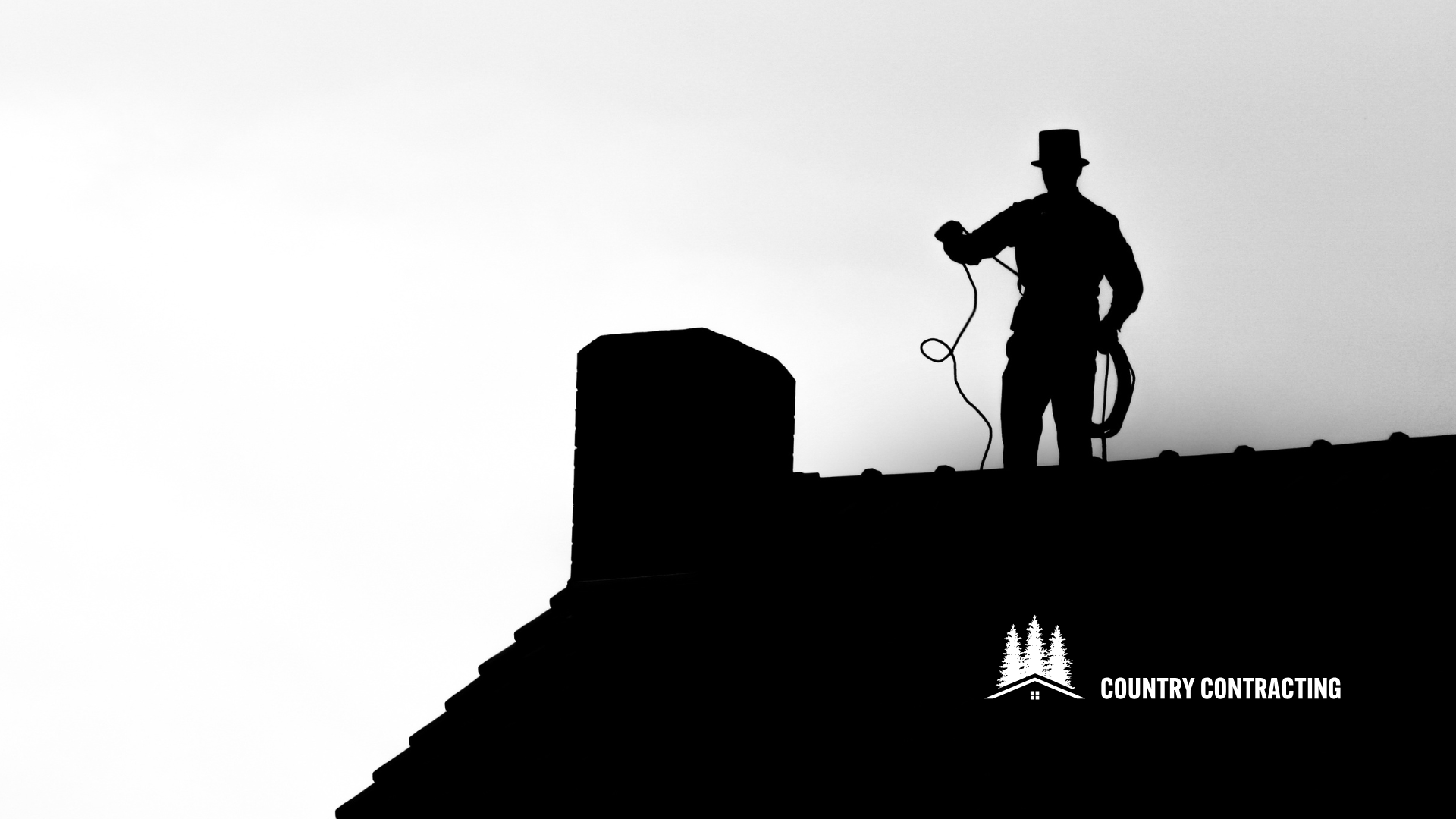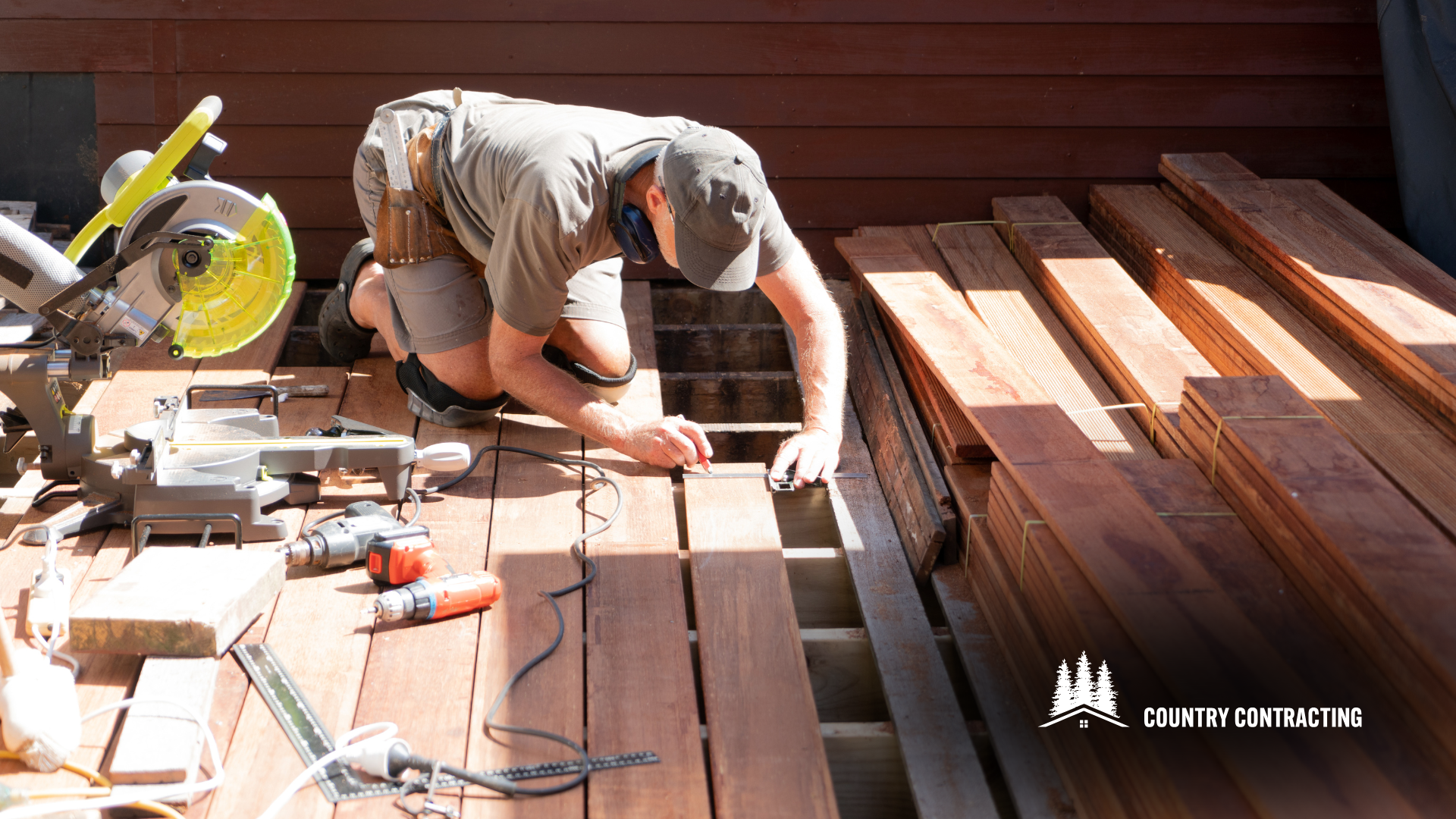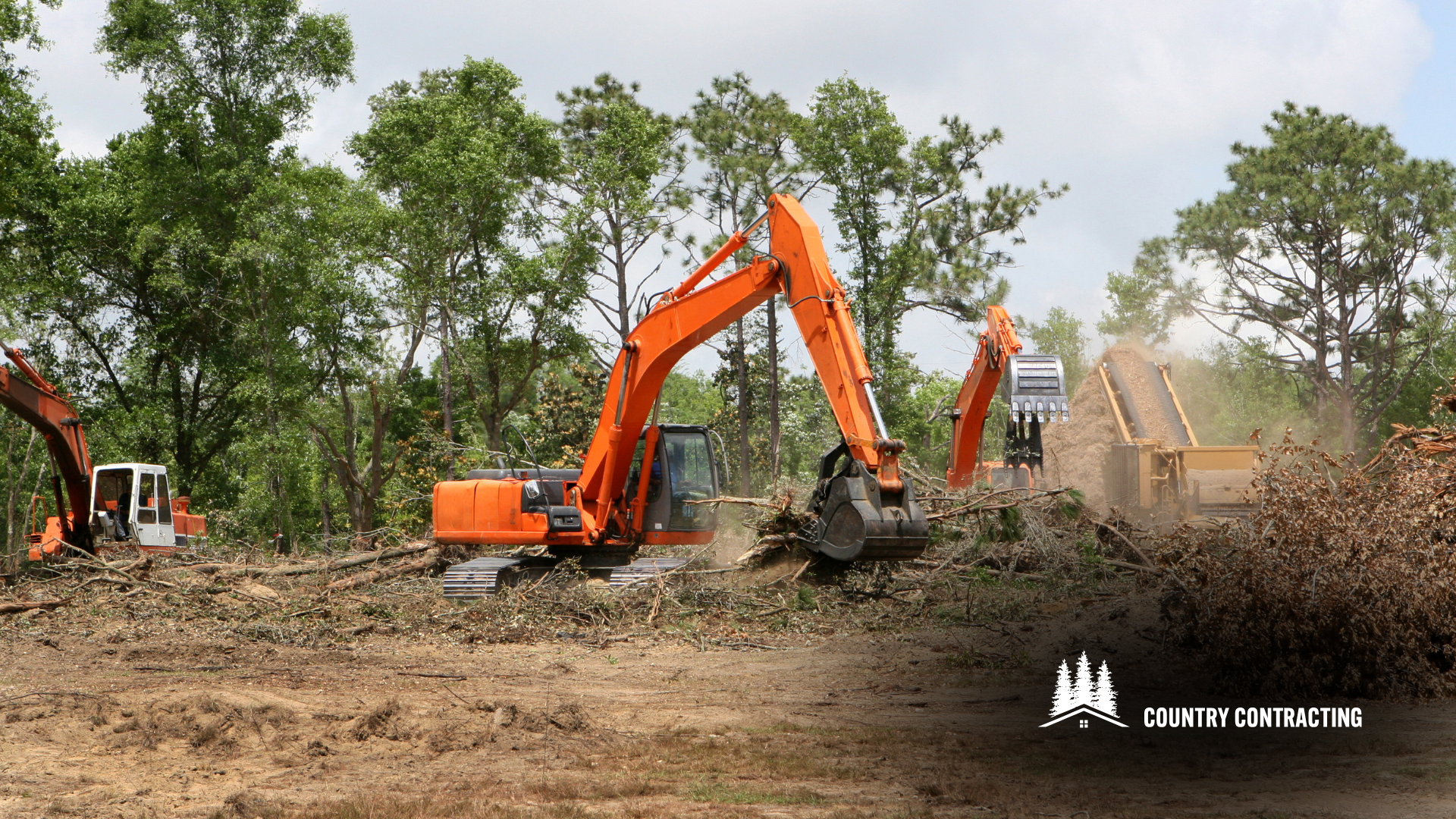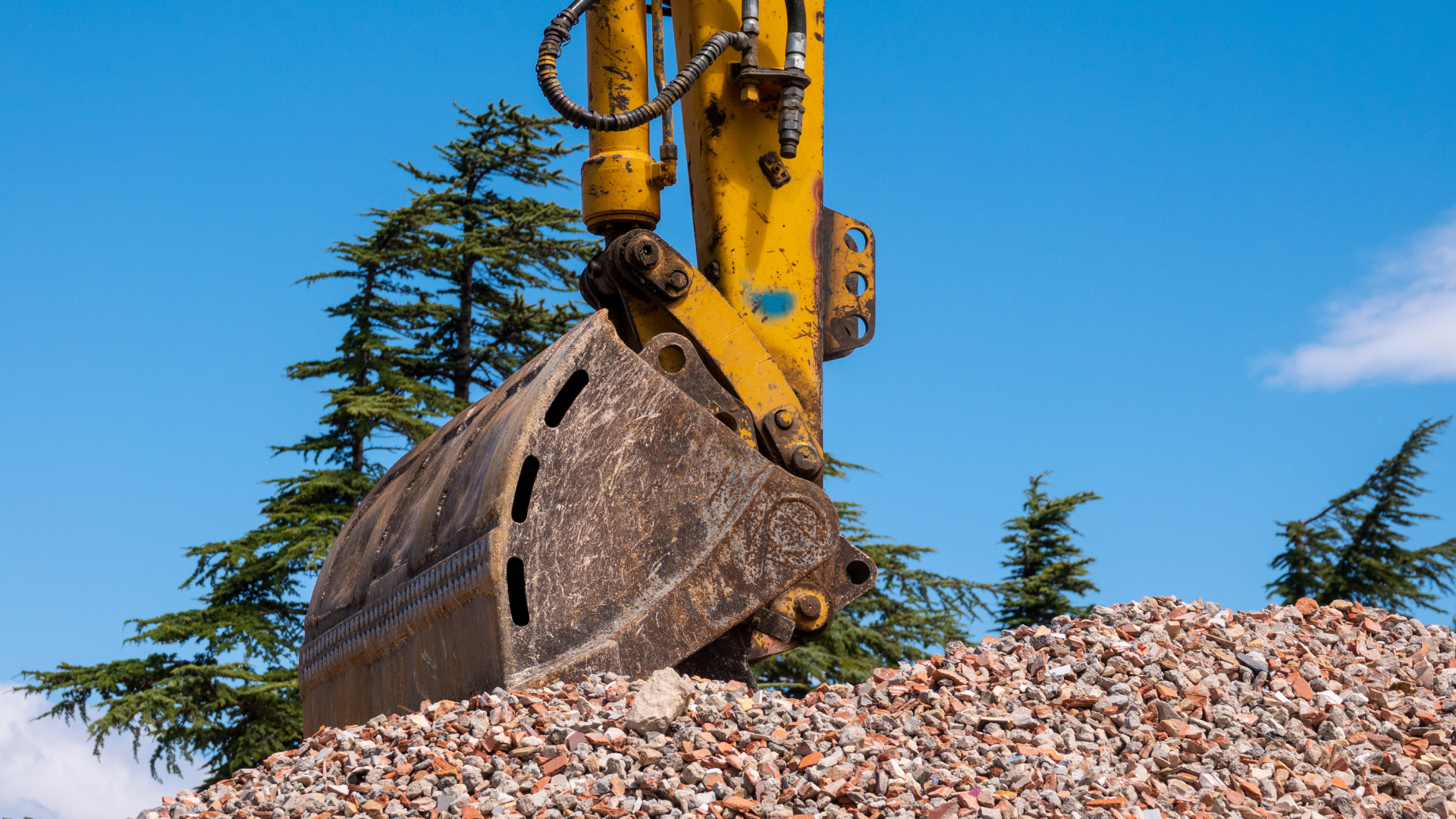CALL FOR A FREE QUOTE TODAY! (705) 457 - 6411
How Does a Septic System Work & When Should You Call the Experts?
Understanding The Basics Of Septic Systems
What Is A Septic System?
A septic system is a self-contained wastewater treatment setup typically found in rural settings. Instead of sending waste through city sewers, your property manages its own waste on site. Country Contracting and Construction has seen firsthand how these systems provide independence from municipal sewer issues. Regular upkeep is key to keeping your system running smoothly.
Main Components Of A Septic System
Your septic setup is made up of several parts working together to treat and disperse wastewater. Here are some main components:
- Septic Tank: Stores and begins the breakdown of waste.
- Drain Field: Filters the treated water safely back into the soil.
- Inlet and Outlet Pipes: Directs the flow of waste and treated water.
- Distribution Box: Helps evenly distribute wastewater into the drain field.
How A Septic System Works
When you use water in your home, it travels through a network of pipes into the septic tank, where solids and liquids separate. The process then continues step-by-step, as outlined below:
| Step | Description |
|---|---|
| Collection | Wastewater travels from your home to the septic tank. |
| Treatment | The tank holds the waste, allowing solids to settle and break down. |
| Dispersion | Clear effluent is slowly released into the drain field for natural filtration. |
Keeping up with your septic system’s maintenance not only prevents failures but also protects your property and the environment.
By understanding these basics, you can better appreciate how important routine care is for avoiding those messy surprises later on. Remember, even a reliable septic system needs attention, and professionals like those at Country Contracting and Construction can offer guidance when needed.
Note: In discussions related to septic systems, the term wastewater is frequently used to describe water that carries waste away from your home.
Septic System Installation Process
Choosing The Right Location
When getting into a proper septic system installation, picking the best spot is the first big step. You need room for the tank and safe distances from your home, well, large trees, and neighboring properties. This part is not just about available space—it’s about ensuring the area has the right soil conditions and follows local spacing guidelines. Check out this quick table for a basic idea:
| Feature | Recommended Distance |
|---|---|
| Home | 10 feet minimum |
| Well | 50 feet minimum |
| Trees/Large Plants | 15 feet minimum |
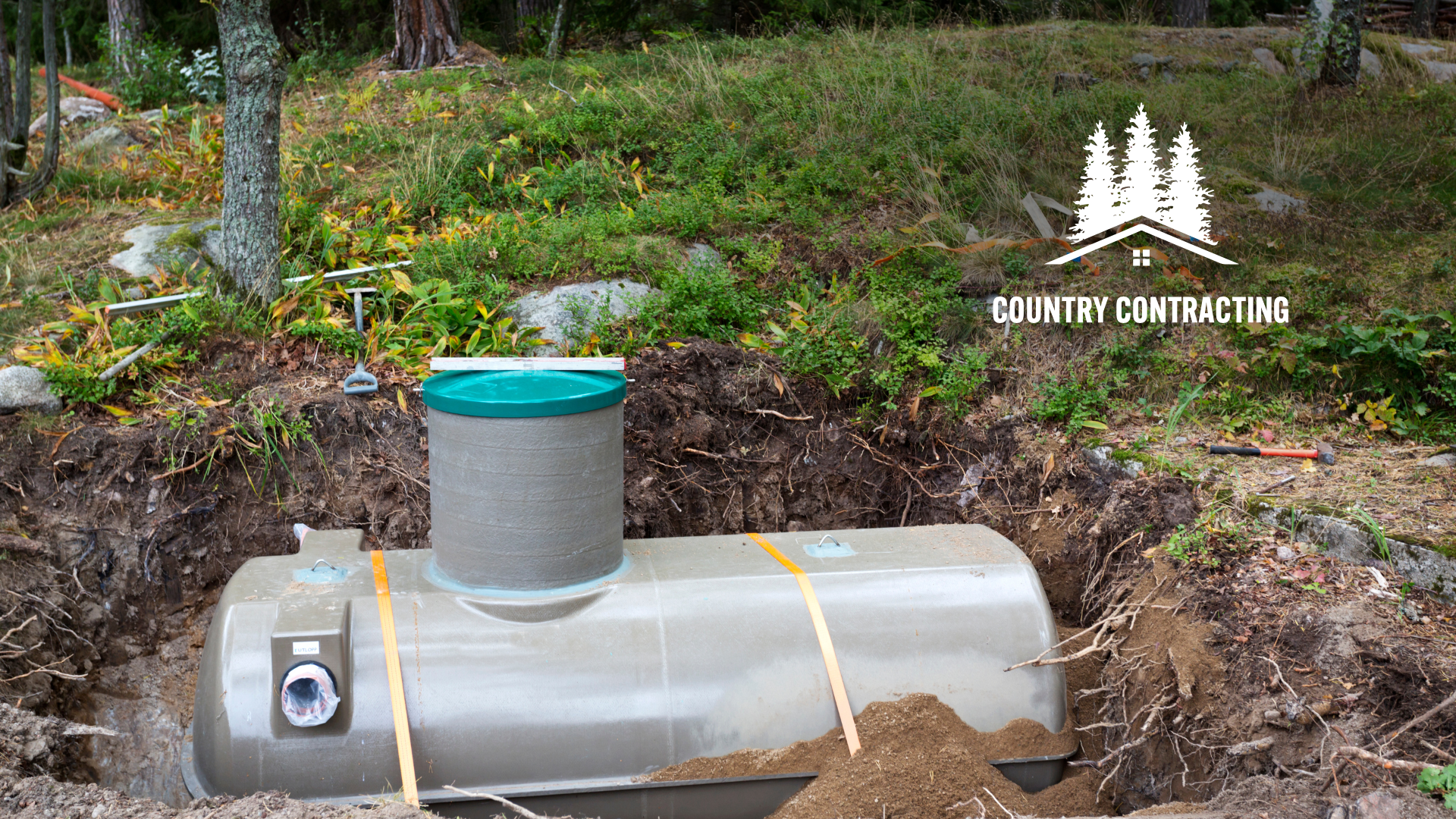
This layout keeps the system working well, avoiding issues like root damage or water contamination.
Installation Steps
When it comes to installing your system, Country Contracting and Construction takes a methodical approach. The process may seem straightforward, but it takes careful attention at every point. Each step demands precision to ensure proper function.
Here’s a simple breakdown of the main steps involved in a septic system installation:
- Prepare the site by clearing the designated area and marking crucial points.
- Excavate the space, leveling the ground to fit both the tank and connecting pipes.
- Set up the tank and make connections that handle both gravity and pump-assisted flows when needed.
- Conduct tests and finish off with adjustments so everything runs smoothly.
These steps are executed with care, ensuring that the installation process goes off without a hitch. It really helps to have a clear, straightforward plan from the start.
Permits And Regulations
Before breaking ground, you’ll need to secure permits and get a handle on local regulations. This part of the process makes sure that the whole installation fits the local legal framework and keeps potential future hassles at bay. Typical steps include gathering required paperwork, scheduling inspections, and getting the final approvals from local authorities.
Being proactive during the permit process can save both time and frustration later on. Knowing exactly what’s needed before starting the work helps keep the project on track.
Following these rules and procedures sets up your septic system for a long, smooth running life. With Country Contracting and Construction at the helm, you can rest assured that every detail, from location choice to final regulation checks, is handled with care and precision.
Signs Your Septic System Needs Attention
Common Warning Signs
Your septic system can send you clear hints when it’s not behaving properly. Look out for these simple but effective signals:
- Slow or ineffective flushing in toilets.
- Gurgling sounds coming from your pipes.
- Persistent odors around your home or yard.
Even if these issues seem minor, they should be a wake-up call. It might save you a lot of trouble later on.
Red Flags You Can’t Ignore
Sometimes, your septic system shows more obvious signs of distress. These red flags are not to be taken lightly:
- Soggy areas on your yard where the grass seems unusually green and lush.
- Patches of the lawn remaining wet even on dry days.
- Sewage backing up in drains or unusual smells wafting around outdoor areas.
Ignoring such signals might lead to costlier repairs down the line, so addressing these issues early remains important.
Getting Professional Eyes On The Problem
While it might feel like a hassle to check things on your own, getting an expert to have a look is often your best move. Professionals know how to spot subtle problems that you might miss. Consider these steps:
- Contact a trusted service like Country Contracting and Construction for an initial consultation.
- Arrange for a detailed inspection of your septic system to uncover any underlying issues.
- Follow their advice on scheduling regular maintenance to keep everything running smoothly.
A quick check-up can prevent a small problem from turning into a major headache. Stay alert and keep things in check!
Maintenance Tips For Your Septic System
Regular Pumping Schedule
Regular pumping is one of the best ways to keep your septic system running smoothly. Usually, most household systems need a pump-out every 3-5 years, but this might change if you have higher water usage or a larger family. Here’s a quick look at typical pumping intervals:
| Household Usage | Recommended Interval |
|---|---|
| Average Use | Every 3-5 years |
| High Demand | Every 2-3 years |
| Lower Water Usage | Could extend beyond 5 years |
Regular pumping prevents backup messes and helps avoid expensive repairs down the line.
Common Maintenance Practices
Staying on top of routine checks can save you from unexpected problems. It’s not rocket science – just a few regular tasks can go a long way:
- Check for unusual odors around the drain field or house
- Inspect and clean any exposed components
- Monitor water levels in your system
Keeping up with these basic maintenance tasks is like taking your car for regular oil changes. A little effort now keeps big issues away later.
By scheduling these checks consistently, you ensure your septic system works properly without surprises. It’s all part of good maintenance.
Avoiding Harmful Chemicals
Chemicals in your home can wreak havoc on your septic system. Things like drain cleaners, bleach, and certain pesticides can kill the friendly bacteria that break down waste. Here are some tips to avoid unnecessary damage:
- Use environmentally friendly cleaning products when possible.
- Avoid disposing of chemicals down the drain.
- Educate your household on the best practices for septic-safe products.
Country Contracting and Construction often advises homeowners that preventing chemical damage is easier than dealing with a system breakdown. Keeping your system healthy means choosing products carefully and keeping harsh chemicals at bay.
When To Call The Experts
When your septic system starts acting up, it's important not to toy around with the repairs yourself. Whether it's small annoyances or major problems, knowing when to call the pros saves you time, money, and a lot of frustration.
Identifying Serious Issues
Sometimes, your septic system gives signs that it needs professional attention. Look out for these red flags:
- Persistent slow drains throughout your home
- Odd noises or gurgling from your pipes
- Unpleasant smells around your system area
It might feel like a minor inconvenience at first, but these could indicate serious issues brewing within your system. Don’t ignore these hints if you start noticing them, because even small leaks or clogs can lead to costly repairs down the road.
Emergency Situations
Immediate help is needed when emergencies come knocking. For example, if you see sewage backing up or your drain field becoming unusually wet, that's a clear call for expert intervention. In these moments, you'll want to have a plan in place:
- Shut off water usage until help arrives.
- Note down any unusual observations or sounds.
- Contact a service that specializes in septic repairs.
A quick response in a crisis can prevent a full-blown disaster, saving you both time and money.
Finding A Qualified Professional
When it’s time to look for assistance, make sure you find specialists who really know their stuff. At Country Contracting and Construction, we pride ourselves on offering straightforward and reliable service. Always consider asking for:
- Proof of license and insurance
- References or reviews from satisfied clients
- Clear pricing and service guarantees
It might be tempting to go for the cheapest option, but qualified experts help avoid bigger issues later on. In your research, you may even come across names like Haliburton contractors – always make sure they have a track record of handling emergency and routine work effectively.
It’s a good idea to have a professional inspector check your system periodically, especially if you’re noticing consistent warning signs. A small investment in a professional evaluation can prevent a future repair that might break the bank.
Environmental Considerations
Impact On Local Water Supply
Septic systems don’t just handle waste—they also can affect the water around us if not properly maintained. Some systems, when overloaded or damaged, might allow contaminants to seep into groundwater or nearby streams. Keeping our local water sources safe is critical for both community health and nature’s well-being. At Country Contracting and Construction, we know that a well-run septic system plays a big role in protecting our neighborhood water supply.
Key points to remember include:
- Improper disposal can affect nearby wells and streams.
- Overuse of the system might overburden the natural filtration process.
- Regular check-ups help catch issues before they impact water quality.
Soil And Natural Filtration
The soil around a septic drain field does more than just hold a system in place—it acts like a natural filter. It traps particles and breaks down waste with the help of microbes working in the background. Different soil types manage water and waste differently; sandy soil drains too quickly while clay might hold onto water for too long. Understanding these differences is key for optimizing the system’s performance and environmental safety.
Some considerations include:
- Soil texture directly affects how efficiently waste is filtered.
- Moisture levels and compaction can change how well the soil cleans the water.
- Regular soil assessments can prevent long-term damage to your drain field.
Best Practices For Sustainability
Moving toward sustainability means taking practical steps that protect our resources and allow septic systems to work as they should. At Country Contracting and Construction, we recommend a routine of regular maintenance and mindful water use. Some of these practices include both everyday habits and periodic professional inspections.
Here are a few sustainable tips:
- Keep up with regular inspections and pumping schedules.
- Conserve water by fixing leaks and using water-saving appliances.
- Avoid flushing non-biodegradable or harsh chemicals into the system.
Below is a table summarizing some best practices:
| Sustainable Practice | Benefit | Tip from Country Contracting and Construction |
|---|---|---|
| Water Conservation | Reduces risk of system overload | Use efficient fixtures and repair leaks immediately |
| Regular Maintenance | Enhances natural filtration process | Schedule pumpings and inspections routinely |
| Cautious Use of Chemicals | Preserves helpful bacteria in soil | Avoid products that can harm the natural filtration system |
Regular attention to these details not only extends the life of your septic system but also helps maintain a healthier environment for everyone. Keeping things running smoothly is simpler than one might think with a few mindful steps.
Wrapping It Up
In conclusion, understanding how your septic system works is key to keeping it running smoothly. Regular maintenance is a must to avoid costly repairs down the line. If you notice any signs of trouble, like slow drains or bad smells, don’t hesitate to call in the pros. They can help you tackle issues before they escalate. Remember, a little attention now can save you a lot of headaches later. So, keep an eye on your system and don’t ignore those warning signs!
Frequently Asked Questions
What exactly is a septic system?
A septic system is a way to treat and dispose of wastewater from your home. It works by breaking down waste and filtering it through the ground.
What parts make up a septic system?
A septic system has a few main parts: the septic tank, the drain field, and the pipes that connect everything.
How does a septic system work?
When you flush the toilet or drain water, it goes into the septic tank. There, solids settle at the bottom, and liquids flow out into the drain field.
How often should I pump my septic tank?
Most experts say you should pump your septic tank every 3 to 5 years, but it can change based on how many people live in your home.
What signs show my septic system needs help?
Look for slow drains, bad smells, or wet spots in your yard. These can mean your septic system isn't working right.
When should I call a professional for my septic system?
If you notice serious problems like sewage backing up into your home, or if you see unusual smells or wet areas, it's time to call an expert.
Disclaimer: This article is intended for informational purposes only and does not constitute professional advice. The descriptions of septic system functions and maintenance provided by Country Contracting and Construction are general guidelines and may not apply to all situations or reflect the specifics of your system. It is recommended to consult with a qualified septic system professional for any concerns or issues related to your particular septic system. Country Contracting and Construction and its representatives are not liable for any decisions made based on the information provided in this article. Individual results may vary, and proper maintenance and professional consultation are advised to prevent potential system failures.
CONTACT US
AREA SERVED
HALIBURTON AND SURROUNDING AREA
NAVIGATION LINKS
EMAIL US
Copyright © 2024 Country Contracting and Construction - All Rights Reserved.
